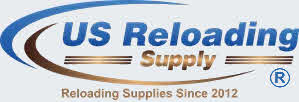How to Spot Scam Reloading Supply Websites: Protect Your Ammo Reloading Purchases
While checking competitor pricing this week, I came across a few more scam reloading supply websites pretending to sell ammo reloading components. These fake sites pop up often, especially when primers, powder, and brass are in high demand. The good news is that they’re usually easy to identify once you know the warning signs.
1. Watch for Suspicious Payment Methods
Most scam “reloading stores” only accept non-standard payment methods like gift cards, Zelle, CashApp, or wire transfers— options that offer little or no buyer protection.
Some scam sites now accept credit cards too, but even then, the pricing and inventory often give them away. If something feels off, slow down and double check.
2. Unrealistic Prices or “Everything in Stock”
If a website claims that every type of reloading brass, bullets, primers, and powder is magically in stock, it’s usually a scam—especially when other reputable vendors are sold out.
Prices far below the typical market rate for reloading components are another big red flag. If it looks too good to be true, it usually is.
3. Copycat Reloading Websites
Some scammers take the name of a legitimate ammo reloading supply store and change it slightly—maybe adding a hyphen, changing one letter, or using a different domain extension (for example, switching from .com to .shop).
They often steal logos, product images, and even phone numbers from real businesses to appear trustworthy at a glance. Always make sure you’re on the correct website for the company you intend to buy from.
4. Check Their About and Contact Pages
Legitimate reloading supply companies will list a real street address and working phone number. Take a minute to verify both before placing an order.
- Google Map the address to see whether it’s a real storefront or just an empty lot or residence.
- Call the phone number to make sure someone actually answers as the business they claim to be.
5. Reverse Image Search Their Store Photos
Many scam sites steal photos from real gun shops or reloading supply stores. If they display store images on their website or Facebook page, you can run them through Google Image Search to see where they really came from.
Recently, I checked a “reloading supply” Facebook page and discovered their main store photo wasn’t from Idaho at all—it belonged to a well-known shop in Missouri. That’s a big tip-off that something isn’t right.
6. Use ScamAdvisor.com Before You Buy
ScamAdvisor.com is a useful tool for checking the trust level of any online store claiming to sell reloading supplies. When we find scam websites, we report them there so other reloaders can avoid being taken advantage of.
Final Thoughts: Trust Your Gut
In the world of online reloading supplies, a little caution goes a long way. If a site has strange payment options, unbelievable prices, or sketchy contact information, it’s better to walk away than risk losing your hard-earned money.
Take a few extra minutes to verify who you’re buying from, and you’ll keep your ammo reloading budget focused on real components—not on funding scammers.

